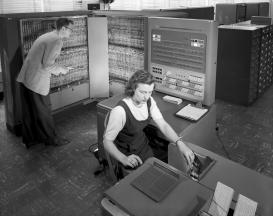Since the 1960s, some European historians have used computers for purposes of historic research, particularly in France, Germany, Italy, and the UK. How did they analyze and synthetize sources with such computational tools? And why? What types of sources did they use? For what conclusion?
The initial pieces of evidence suggest that the process involved in projects of this kind could be roughly defined into two stages: first historians extracted information from the sources in order to create a set of data (analytical operations); and then they questioned this set of data with statistical or linguistic computer programs in order to explore historical issues (synthetic operations). During this process, historians produced a new array of items: input products such as databases, matrices, programs, thesauruses as well as also output products such as graphs, tables, lexica, and dictionaries. Those work products were shaped by the primary sources historians were studying. They constituted new representations of the sources, that is, another angle to look at sources: the reading and writing of such documents, supported by extra-historical skills and techniques, implied a profound transformation in the way historical research processes worked.
The aim of my PhD is to study how these new work products were created, used, and how they circulated between one work community to another between the 1960s and 1990s, that is, between the first times computers were used by historians in France (1961) and the popularization of the web (in the mid-1990s). Which community of historians started to work with computers and how? What technical support did they have? What items did they produce and how did they use them? How did they communicate such type of work to other historians?

